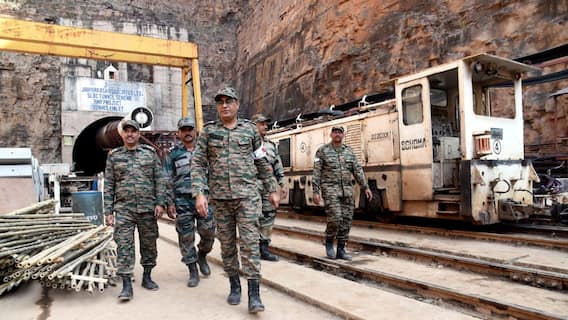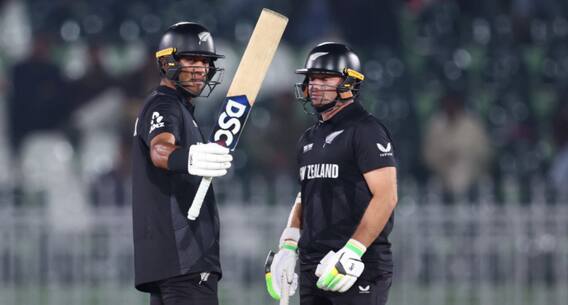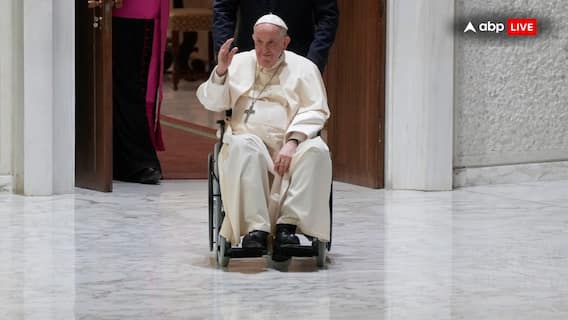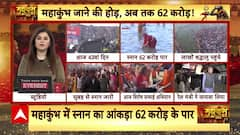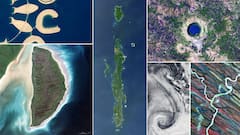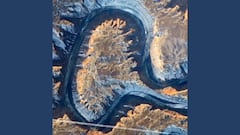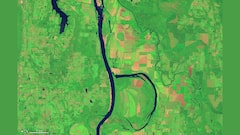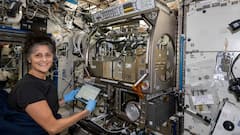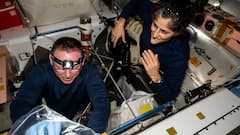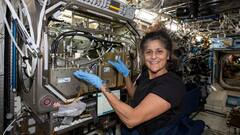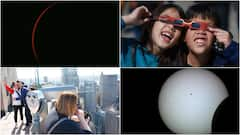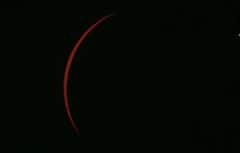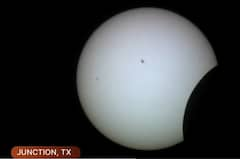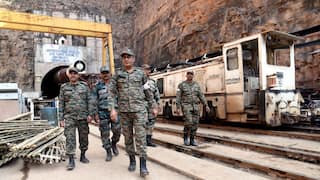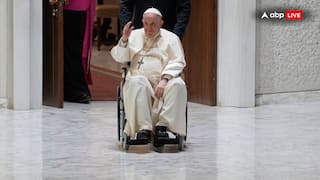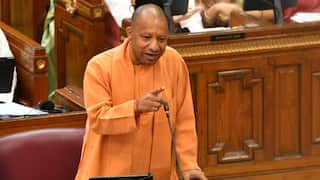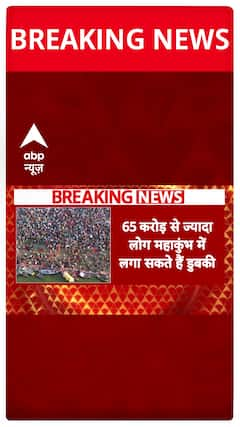Can You Shampoo Your Hair In Space? Astronaut At International Space Station Says Yes, Tells Us How
NASA astronaut Megan McArthur shares interesting nuggets of info on use of water in space as she demonstrates how she washes her hair up in space. Also find out how they eat, drink, or write in space

New Delhi: Life in space isn’t easy. Even day-to-day activities become quite challenging when you are in a no-gravity zone. But astronauts seem to manage all that, from eating, drinking and working out, to sleeping, brushing teeth, and even washing hair — yes, you heard that right.
NASA astronaut Megan McArthur, who is aboard the International Space Station (ISS) along with other crew members, recently tweeted about how astronauts wash their hair while in space. She even shared a video, demonstrating the exercise.
McArthur was earlier part of the Space Shuttle Mission STS-125, the final Space Shuttle Mission to the Hubble Space Telescope.
Microgravity, ‘No-Rinse Shampoo’ And Water Reclamation
McArthur wrote in the tweet that it is not possible for astronauts to take a shower aboard the ISS because the microgravity would cause the water to splash everywhere. "The simple things we take for granted on Earth are not so simple in microgravity," she posted.
In the video shared by her, she mentioned how she carries out the difficult task.
She said she prefers to wet her hair first, before applying the shampoo. While they use a “no-rinse shampoo” up in space, McArthur said it definitely helps to use some water while applying it.
Since she doesn't want the water to splash around, she keeps the towel ready. McArthur also explains how they have special curtains for the protection of the space station’s equipment from water.
🚿Shower Hour! Astronauts can’t take showers in space or the water would go everywhere, so I thought I would demonstrate how we keep hair clean on the @Space_Station. The simple things we take for granted on Earth are not so simple in micro-gravity! pic.twitter.com/wfXhNv6zzD
— Megan McArthur (@Astro_Megan) August 31, 2021
The astronaut says she must be very careful while combing her wet hair so the water does not flow around. After applying a little bit of the no-rinse shampoo on her hair, she rubs it using the towel and then combs her hair again. Now, she has to rinse the shampoo out of her by using the water and the towel, she explains.
McArthur shares an interesting piece of information — the condensates (liquid formed after warm air touches a cold surface) formed from the towel and from her hair will be picked up by the air-conditioning system of the ISS and will be put back to the water reclamation system.
She explains that around 70 per cent of the water is reclaimed, and that scientists are working on developing technology that has an efficiency of more than 95 per cent water reclamation capacity.
She says that this will be very useful for astronauts during future space exploration, especially to the Moon and Mars. McArthur jokes that styling her hair is the fun part and that she can put it in any direction.
How Do Astronauts Eat In Space?
Earlier, NASA astronauts Jessica Meir and Andrew Morgan had explained the kinds of food that are consumed onboard the ISS and the methods of their preparation.
According to Morgan, as mentioned on the NASA website, there are two varieties of space food — thermostabilised food in green packets, which are very similar to Military Meals Ready to Eat (MRE), and freeze-dried foods.
Meir said the water content is sucked out of this food, and they add the water back using the Rehydration System before consuming them. Food warmers and refrigerators are also available on the ISS.
The space gourmet food can include Turkish fish stew, rice with butter, lentil soup, and grilled chicken patty, among others. Meir said they can even turn their spoons upside down to eat, as the food would not fall off, and they themselves can eat in an upside down position.
Chris Hadfield's Peanut Butter Sandwich
Space foods earlier used to be squeezed out of tubes and brought up in dehydrated packets. But now, normal foods on Earth need minor adaptations to be used as space food. Quoting astronaut Chris Hadfield, the NASA website says they replace the bread in sandwiches with tortillas, to avoid bread crumbs flying everywhere.
In a Canadian Space Agency video, Hadfield can be seen using space scissors to cut the food pouches and adding honey and peanut butter to the tortilla. Hadfield explains that the bubbles in the honey flow in the middle instead of the top because of no gravity. Since they don't have running water in space, they use disinfectant wipes to clean their hands after eating.
Drinking in Space
At the International Space Station, water after cleaning, sweating gets expelled into a purification system, said Chris Hadfield, according to the Canadian Space Agency. Since 2010, a system has been developed that purifies water in real-time, removing the need to store water. Filters and spinning distillers are used to create artificial gravity, move the water, and recycle it. Around 6,000 litres of water, including urine water, are recycled every year, on the ISS. Hadfield says the recycled water is purer than what people drink on Earth.
Crying In Space
In a video, Chris Hadfield also demonstrates what crying looks like in space. He places water droplets near his eyes, and it can be seen they form a ball.
Writing in Space
Astronauts write in space using the Fisher Space Pen, which is a pressurised ink cartridge designed to avoid leaks. They don't use pencils because the lead used in it can be dangerous if it flies around, and can damage equipment.
Sleeping in Space
Chris Hadfield, in a Canadian Space Agency video, says sleep stations are present inside Node-2 of the International Space Station, and that there are a total of six small bedrooms, sleep stations or sleep pods. Inside each pod is a sleeping bag tied to the wall. No mattresses or pillows do not make sleep uncomfortable because in the absence of gravity, there is no need to hold the person up, and every muscle is relaxed, he explains. Hadfield says that the astronauts can put on their space pyjamas and sleep undisturbed inside the sleeping bag.
Trending News
Top Headlines











